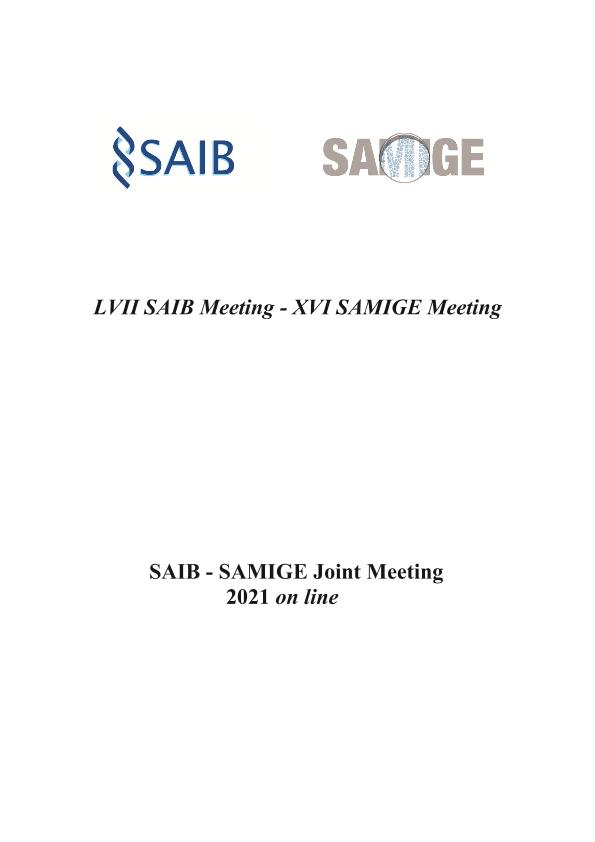Evento
Co-cultivation of haematococcus pluvialis and chlorella sp. as a novel strategy for microalgal-bases biotechnology
Scodelaro Bilbao, Paola Gabriela ; Almeyda, María Delfina
; Almeyda, María Delfina ; Bolletta, Micaela; Leonardi, Patricia Ines
; Bolletta, Micaela; Leonardi, Patricia Ines
 ; Almeyda, María Delfina
; Almeyda, María Delfina ; Bolletta, Micaela; Leonardi, Patricia Ines
; Bolletta, Micaela; Leonardi, Patricia Ines
Tipo del evento:
Reunión
Nombre del evento:
LVII SAIB Meeting; XVI SAMIGE Meeting
Fecha del evento:
01/11/2021
Institución Organizadora:
Sociedad Argentina de Investigación en Bioquímica y Biología Molecular;
Título de la revista:
Biocell
Editorial:
Sociedad Argentina de Investigación Bioquímica y Biología Molecular
ISSN:
0327-9545
Idioma:
Inglés
Clasificación temática:
Resumen
Microalgae have been identified as potential sources of valuable products with many commercial applications including food supplements, feed additives and biofuel feedstocks. They are innovative production platforms since, in order to adapt to growth conditions, they synthesize various metabolites. However, the synthesis of these biomolecules requires an adequate selection of microalgal species, a deep knowledge of their biology and physiology, as well as rigorous evaluation of cultivation strategies. Monocultures have been the preferred production route in the bio-industry. Nevertheless, from a biotechnological perspective, it is necessary to develop successful cultivation technologies to increase their productivity, in terms of biomass and availability of biomolecules. In this way, there is increasing interest in the use of co-cultures to deal with contamination issues, and simultaneously increase productivity and product diversity. Thus, in this work our purpose was to analyze co-cultivations of two different microalgal strains in terms of biomass production and product availability. For this end, Haematococcus pluvialis and Chlorella sp., two important carotenoid producers, were selected for co-cultivations in an appropriate culture medium at 22oC for 10 days. Then, cell number, dry weight, chlorophyll and carotenoid quantification and autofluorescence, Red Nile (RN) fluorescence, and triacylglyceride (TAG) and sterol contents were analyzed. The results revealed that co-cultivation based on 50% H. pluvialis and 50% Chlorella sp. prevented population domination of one strain over the other. In addition, this co-cultivation condition showed the highest values in terms of cell density and dry weight. Flow cytometry analyses also shown the maximum RN fluorescence and carotenoid autofluorescence within this experimental condition. In addition, in co-cultures based on 50% H. pluvialis and 50% Chlorella sp., carotenoid autofluorescence was accompanied by the greatest increase in the antioxidant capacity and in the amount of total carotenoids. Moreover, thin layer chromatography coupled to spectrophotometric quantification also showed highest TAG and sterol contents. The results suggest that the co-cultivation system based on 50% H. pluvialis and 50% Chlorella sp. may be a successful strategy to enhance biomass yield and the obtention of value-added products, supporting the development of a microalgal-based biotechnological process.
Palabras clave:
Clorophyta
,
Coculture
,
Biomass
,
Lipid
Archivos asociados
Licencia
Identificadores
Colecciones
Eventos(CERZOS)
Eventos de CENTRO REC.NAT.RENOVABLES DE ZONA SEMIARIDA(I)
Eventos de CENTRO REC.NAT.RENOVABLES DE ZONA SEMIARIDA(I)
Citación
Co-cultivation of haematococcus pluvialis and chlorella sp. as a novel strategy for microalgal-bases biotechnology; LVII SAIB Meeting; XVI SAMIGE Meeting; Online; Argentina; 2021; 1-1
Compartir



